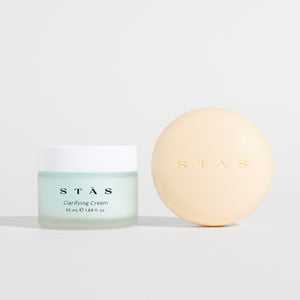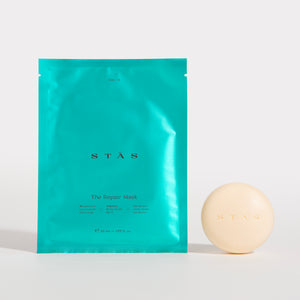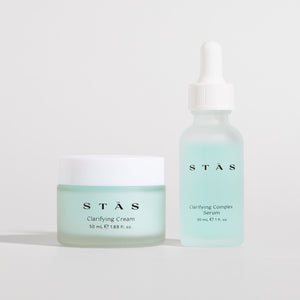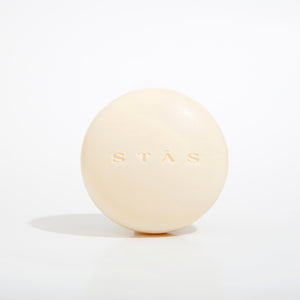Skincare + Hormones: Why Your Skin Changes Throughout the Month
Mar 25, 2025
If you’ve ever felt like your skin has a mind of its own from week to week, you're not wrong. Hormones—those powerful chemical messengers—play a huge role in everything from oil production and hydration levels to inflammation and breakouts. Whether you’re navigating your monthly cycle or dealing with hormonal fluctuations due to stress, pregnancy, menopause, or birth control, understanding how hormones affect your skin can help you work with your body instead of fighting it.
In this blog, we’ll break down how hormones influence your skin throughout the month and offer tips on how to adjust your skincare routine accordingly.
Week 1: Menstrual Phase (Days 1–5)
What’s Happening: This is when your period starts. Hormone levels—particularly estrogen and progesterone—are at their lowest. This hormonal dip can lead to dryness, dullness, and increased skin sensitivity. Some people also experience breakouts as lingering inflammation from the previous week peaks.
How It Affects Your Skin:
- Dry or flaky skin
- Increased redness or sensitivity
- Lingering breakouts from previous hormonal surges
What Your Skin Needs:
- Hydration and barrier support
- Gentle products that calm inflammation
Try This: Use a calming and hydrating product like the STĀS Clarifying Cream, which contains glutathione and tea tree oil to balance and soothe, along with probiotics to support your skin barrier.
Week 2: Follicular Phase (Days 6–14)
What’s Happening: Estrogen starts to rise, triggering collagen production and increased cell turnover. Your skin may look its best during this phase: bright, plump, and clear.
How It Affects Your Skin:
- Improved elasticity and glow
- Fewer breakouts
- Skin is more resilient
What Your Skin Needs:
- Gentle exfoliation to make the most of increased cell turnover
- Lightweight hydration to maintain the glow
Skincare Tip: This is a great time to try a mild exfoliating treatment or add a brightening serum. Use this opportunity to experiment with actives, since your skin is less sensitive right now.
Week 3: Ovulation + Early Luteal Phase (Days 15–21)
What’s Happening: Estrogen peaks and then starts to decline, while progesterone begins to rise. Sebum (oil) production increases, which can lead to clogged pores or subtle breakouts.
How It Affects Your Skin:
- More oil and shine
- Increased risk of congestion and breakouts
- Skin may feel thicker or more inflamed
What Your Skin Needs:
- Clarifying ingredients to balance oil and reduce inflammation
- Lightweight moisture to maintain balance without clogging pores
Try This: Incorporate the STĀS Clarifying Complex Serum, which uses willow bark extract, chamomile, and hyaluronic acid to decongest pores while keeping skin hydrated and calm.
Week 4: Late Luteal Phase (Days 22–28)
What’s Happening: Both estrogen and progesterone drop, and testosterone becomes more dominant. This can lead to PMS-related breakouts, particularly around the chin and jawline.
How It Affects Your Skin:
- Hormonal acne
- Increased oiliness and inflammation
- Potential sensitivity or skin picking
What Your Skin Needs:
- Targeted acne care that doesn’t over-strip
- Anti-inflammatory support
Skincare Tip: Instead of over-exfoliating, focus on calming ingredients. Avoid harsh cleansers or drying treatments, which can damage the barrier and prolong healing.
Hormonal Acne vs. Traditional Acne
Hormonal acne often appears as deeper, cystic blemishes around the jawline and chin. Unlike traditional acne caused by surface-level bacteria, hormonal acne is often linked to internal inflammation and sebum overproduction triggered by hormone fluctuations. It’s also more cyclical, tending to flare up at the same time each month.
If you're dealing with hormonal acne, consider:
- Tracking your cycle and flare-up patterns
- Using non-comedogenic, barrier-supporting skincare
- Managing stress and diet
- Consulting a dermatologist for long-term support if needed
Beyond the Cycle: Hormonal Shifts Through Life
While much of the conversation around skin and hormones focuses on the menstrual cycle, it’s important to remember that other life stages also influence hormone levels—and skin.
Puberty:
- Often marked by increased oiliness and breakouts
- Focus on gentle exfoliation and barrier-building
Pregnancy:
- Hormonal surges can cause both that signature pregnancy glow and pregnancy-related melasma or breakouts
- Look for safe, hydrating ingredients and avoid retinoids or salicylic acid
Perimenopause + Menopause:
- Estrogen decline leads to dryness, thinning, and dullness
- Incorporate richer moisturizers and ingredients that promote elasticity (like peptides or ceramides)
Our Approach at STĀS
At STĀS, we believe skincare should work with your body—not against it. That means understanding the real, physiological changes your skin experiences and designing products that support you through every season and every cycle.
Whether you're targeting breakouts, rebuilding your barrier, or simply trying to stay consistent, we’re here with plant-forward, science-backed formulas that meet your skin where it is—today, next week, and beyond.
Final Thoughts
Your skin is always communicating with you—and hormones are a big part of that story. When you understand your cycle and tune into what your skin is asking for, you can adapt your routine in simple, supportive ways that make a real difference.
Let your skincare be flexible. Let it evolve. And most importantly, let it support you in feeling confident in your skin every day of the month.
👉 Curious about which STĀS products can support your cycle? Explore the Collection







